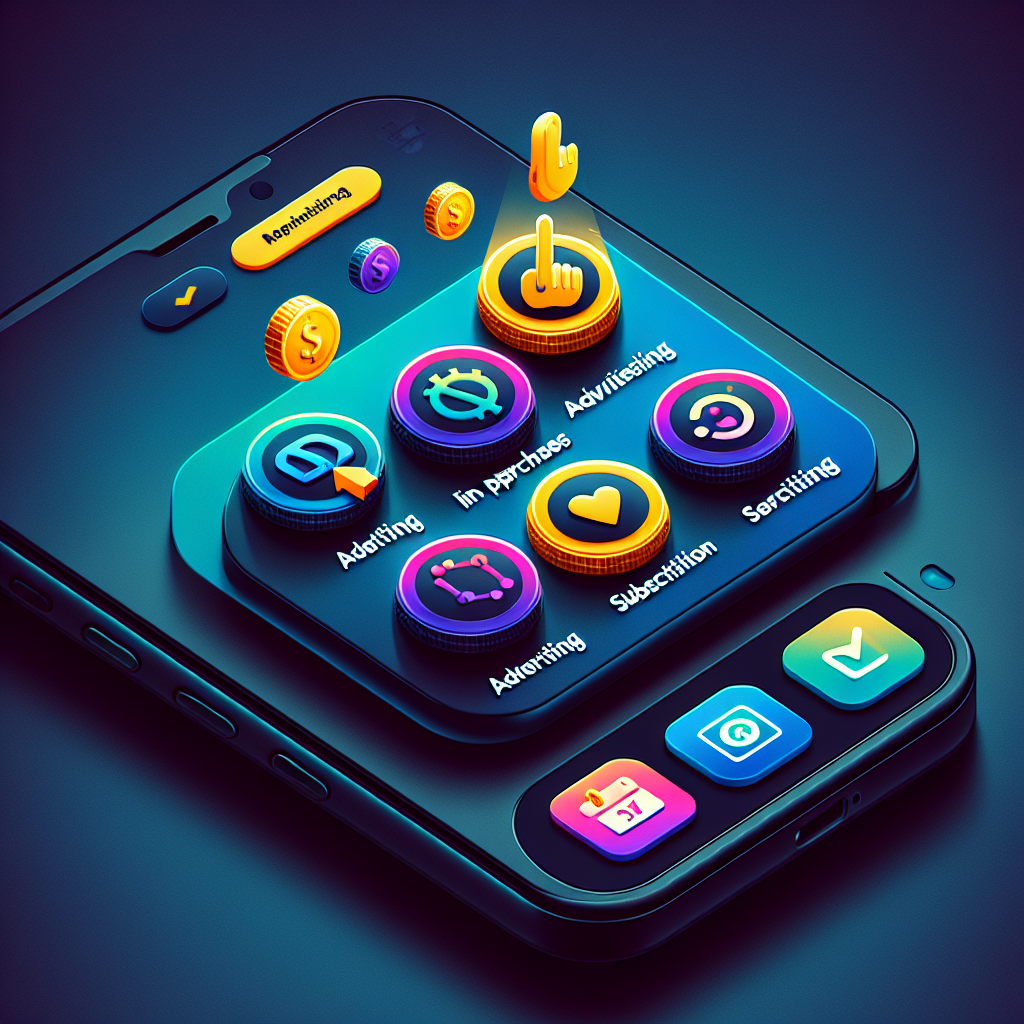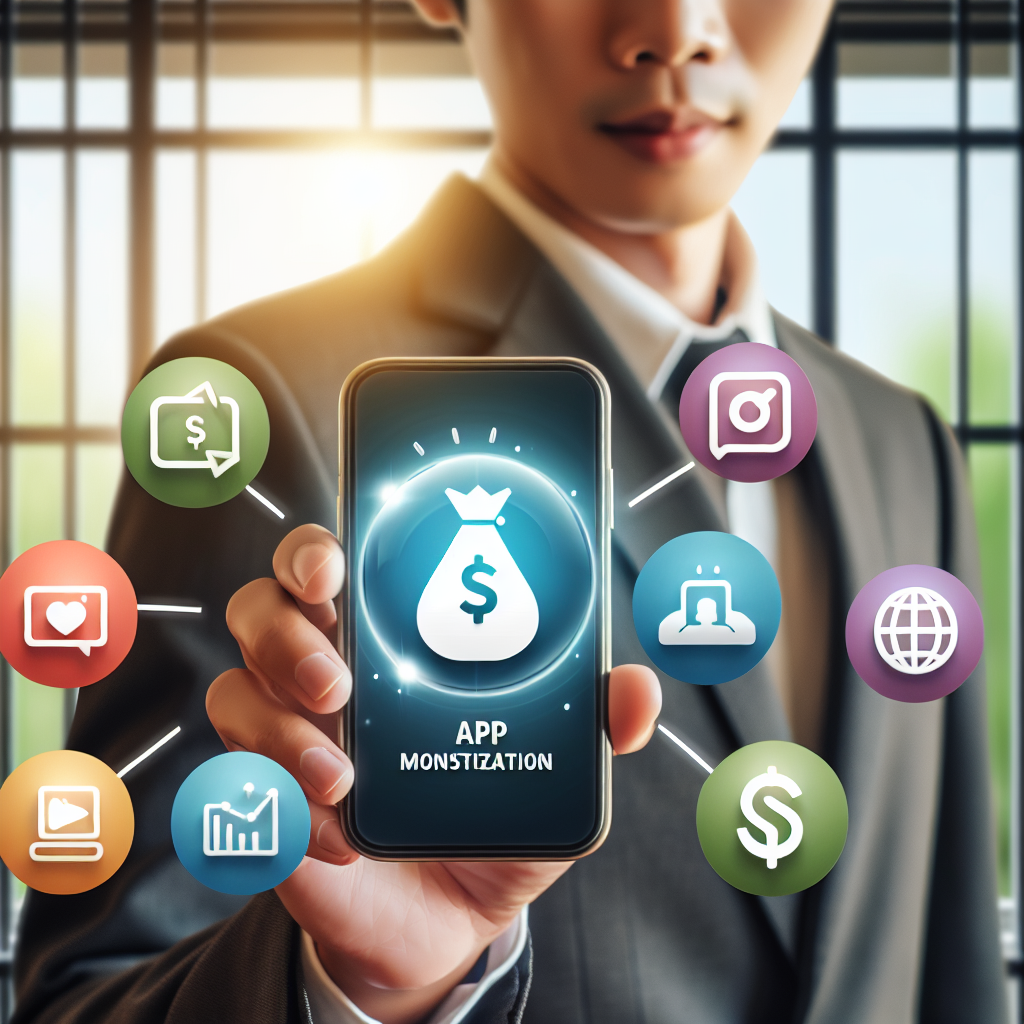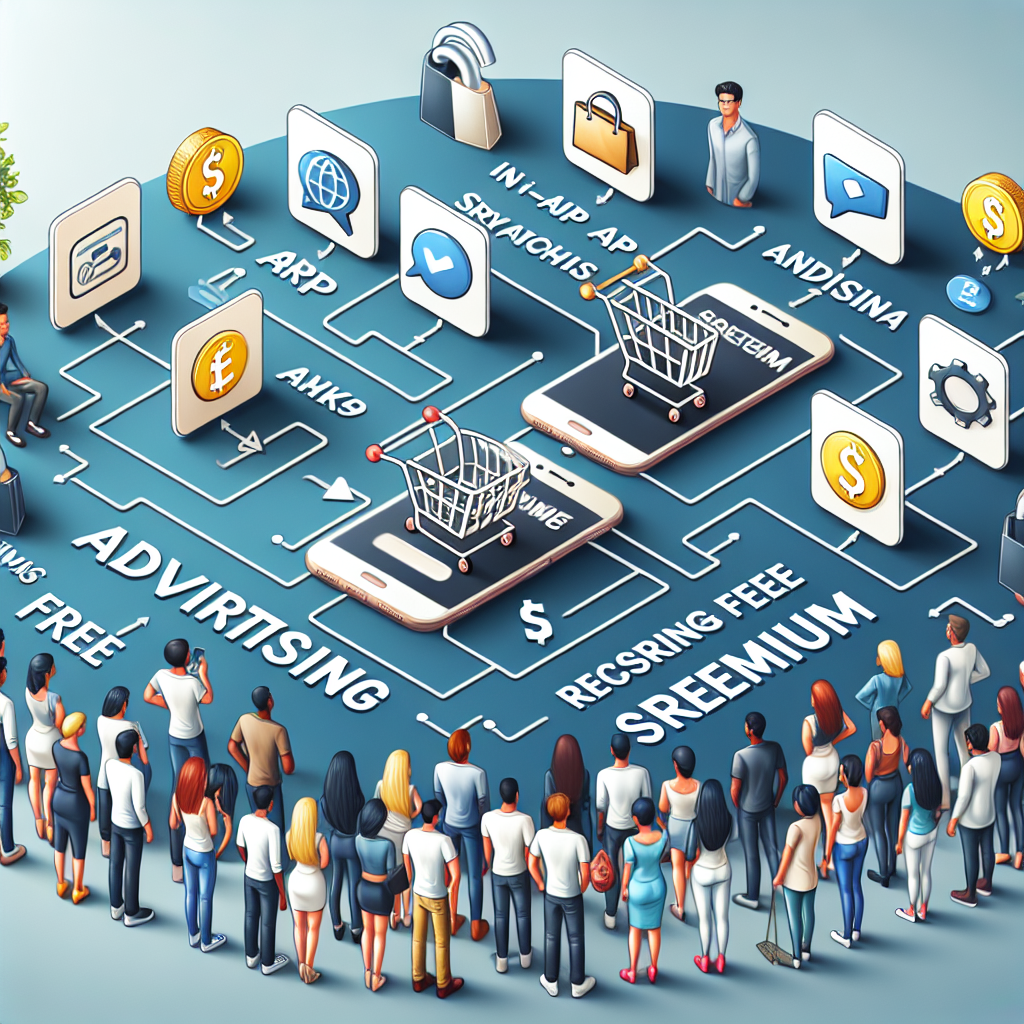In the rapidly evolving world of mobile applications, finding effective ways to generate revenue is crucial. App monetization strategies are essential for ensuring that your app not only reaches a broad audience but also converts that reach into tangible financial gains. Whether you are a developer, a marketer, or an entrepreneur, understanding these strategies can dramatically impact your app’s success.
There are several common monetization models that have proven effective across various types of apps. These include:
- In-App Purchases: Offering users the ability to buy virtual goods, extra features, or premium content within the app.
- Advertising: Displaying ads within the app to generate revenue from ad impressions or clicks.
- Subscription Services: Charging a recurring fee for access to premium content or services.
- Freemium Model: Providing a basic version of the app for free while charging for advanced features.
Choosing the right strategy or combination of strategies depends on your app’s target audience, market, and unique value proposition. It’s important to analyze user behavior, competitive landscape, and potential revenue streams to make informed decisions.
Understanding and implementing effective app monetization strategies can be complex, but with the right guidance, you can maximize your app’s revenue potential. Book A Consultation Now! Let our experts at App Wise Consultings assist you in navigating these intricacies and setting your app up for financial success.
In-App Purchases for Revenue Growth

One of the most lucrative app monetization strategies is implementing in-app purchases (IAPs). This model allows users to buy virtual goods, extra functionalities, or premium content directly from within the app. It’s a versatile approach that can be tailored to various app categories, from gaming to utility apps.
There are several types of in-app purchases you can incorporate:
- Consumable IAPs: These are items that users can purchase and use once, such as extra lives in a game, virtual currency, or consumable resources.
- Non-consumable IAPs: These are one-time purchases that provide permanent benefits, such as unlocking a premium feature, ad removal, or a special character.
- Subscription-Based IAPs: Offering users recurring access to premium content or services, often on a weekly, monthly, or yearly basis.
To maximize revenue through in-app purchases, consider the following best practices:
- Offer Value: Ensure that the items or features available for purchase provide real value to the user, enhancing their experience or offering something unique.
- Strategic Pricing: Set prices that reflect the perceived value of the items while remaining affordable for your target audience.
- Seamless Integration: Make the purchasing process as smooth and intuitive as possible to reduce barriers to purchase.
- Regular Updates: Continuously update your app with new purchasable items or features to keep users engaged and willing to spend.
By carefully designing and implementing in-app purchases, you can create a steady and significant revenue stream while enhancing user engagement and satisfaction. This strategy requires a deep understanding of your audience and their spending behaviors, but when executed well, it can be a powerhouse for revenue growth.
Leveraging In-App Advertising

Another effective app monetization strategy is leveraging in-app advertising. This approach allows app developers to earn revenue by displaying ads within their apps. In-app advertising can be particularly profitable for apps with a large user base or high engagement rates.
There are several types of in-app ads you can utilize:
- Banner Ads: Small, rectangular ads that appear at the top or bottom of the screen. They are less intrusive but may also generate lower revenue per impression.
- Interstitial Ads: Full-screen ads that cover the app’s interface at natural transition points, such as between game levels. These ads are more engaging and can generate higher revenue per impression.
- Rewarded Video Ads: Users watch a video ad in exchange for in-app rewards, such as virtual currency or extra lives. These ads typically have high engagement and completion rates.
- Native Ads: Ads that blend seamlessly with the app’s content and design, providing a less disruptive experience for users.
To effectively leverage in-app advertising, consider the following best practices:
- Choose the Right Ad Network: Partner with reputable ad networks that offer high-quality ads and competitive revenue shares.
- Balance User Experience and Revenue: Avoid overwhelming users with too many ads, as this can lead to a poor user experience and increased app uninstalls. Instead, find a balance that maximizes revenue without compromising user satisfaction.
- Targeted Advertising: Utilize data and analytics to deliver personalized ads that are relevant to your users’ interests and behaviors, increasing the likelihood of engagement.
- Optimize Ad Placement: Strategically place ads in locations where they are visible but not disruptive, such as during natural breaks in the app’s usage flow.
By thoughtfully integrating in-app advertising, you can unlock a steady revenue stream while maintaining a positive user experience. This strategy requires careful planning and continuous optimization to ensure it meets both your financial and user engagement goals.
Subscription Models for Consistent Income

Subscription models have emerged as one of the most reliable app monetization strategies for generating consistent income. By offering users access to premium content or features on a recurring basis, you can create a steady stream of revenue while building long-term relationships with your users.
There are several types of subscription models you can consider:
- Freemium Subscriptions: Offer a basic version of your app for free, with the option to upgrade to a premium version that includes additional features or content. This model allows users to try the app before committing to a subscription.
- Tiered Subscriptions: Provide multiple subscription levels with varying degrees of access and features. This allows users to choose a plan that best fits their needs and budget, potentially increasing your overall revenue.
- Content Subscriptions: Charge users a recurring fee for access to exclusive content, such as articles, videos, or podcasts. This model is particularly effective for media and entertainment apps.
- Service Subscriptions: Offer ongoing services, such as cloud storage, fitness coaching, or language learning, in exchange for a recurring fee. This model is ideal for apps that provide continuous value to users.
To successfully implement a subscription model in your app, consider the following best practices:
- Offer a Free Trial: Allow users to experience the premium features of your app for a limited time before requiring a subscription. This can help to convert hesitant users into paying subscribers.
- Provide Value: Ensure that your premium features or content offer significant value to justify the subscription cost. Users are more likely to subscribe if they perceive the benefits as worthwhile.
- Regular Updates: Continuously update and enhance your app to keep subscribers engaged and reduce churn rates. Regularly adding new features or content can also attract new subscribers.
- Transparent Pricing: Clearly communicate the costs and benefits of each subscription tier to avoid confusion and build trust with your users.
By adopting a subscription model, you can create a reliable revenue stream that supports the long-term growth of your app. This approach not only provides financial stability but also fosters a loyal user base that is invested in the continued success of your app.
Freemium Models to Attract Users
The freemium model is a highly effective app monetization strategy designed to attract a large user base by offering a basic version of your app for free while charging for premium features or content. This approach lowers the barrier to entry for users, allowing them to experience the core functionalities of your app without any initial investment.
There are several key components to a successful freemium model:
- Core Features for Free: Offer essential features that provide value to users without any cost. This helps in building a broad user base and increases the likelihood of word-of-mouth promotion.
- Premium Features: Identify advanced features or exclusive content that users would be willing to pay for. These could include enhanced functionalities, ad-free experiences, or access to special content.
- In-App Purchases: Allow users to make one-time purchases for specific features or content. This can complement the freemium model by offering additional revenue streams.
- Limited-Time Offers: Provide temporary access to premium features as a trial. This can help users understand the value of the premium version and encourage them to upgrade.
To maximize the effectiveness of the freemium model, consider the following best practices:
- Balance Free and Premium Features: Ensure that the free version is valuable enough to attract users, but not so comprehensive that they have no incentive to upgrade. Find the right balance between free and premium features to drive conversions.
- Engage Users Early: Highlight the benefits of premium features early in the user experience. Use in-app messages, tutorials, or guided tours to showcase what users are missing out on by not upgrading.
- Optimize the User Journey: Make it easy for users to upgrade to the premium version. Ensure that the upgrade process is seamless and that users can access premium features with minimal friction.
- Collect Feedback: Regularly gather user feedback to understand which features are most valuable to them. Use this information to refine your freemium offerings and increase conversion rates.
The freemium model is particularly effective for apps where user engagement and retention are crucial. By providing a taste of what your app has to offer for free, you can attract a wide audience and gradually convert them into paying customers, thereby boosting your overall revenue.
Implementing Data-Driven Monetization

In today’s competitive app market, leveraging data-driven strategies is essential for maximizing revenue. By analyzing user behavior and engagement metrics, you can make informed decisions that enhance your app monetization strategies and drive sustainable growth.
Here are some effective ways to implement data-driven monetization:
- User Segmentation: Divide your user base into segments based on demographics, behavior, and preferences. This allows you to tailor monetization strategies to different groups, improving the relevance and effectiveness of your efforts.
- A/B Testing: Conduct experiments to compare different monetization approaches, such as varying ad placements or pricing models. Analyze the results to determine which strategies yield the best outcomes.
- Personalized Offers: Use data to understand individual user preferences and behavior. Offer personalized discounts, promotions, or content that resonate with specific users, increasing the likelihood of conversions.
- Predictive Analytics: Utilize machine learning algorithms to predict future user behavior and trends. This can help you proactively adjust your monetization strategies to align with anticipated changes in user engagement and demand.
- Revenue Attribution: Track the revenue generated by different monetization methods and channels. Understand which strategies contribute the most to your bottom line and allocate resources accordingly.
To effectively implement data-driven monetization, follow these best practices:
- Invest in Analytics Tools: Equip your app with robust analytics tools that provide comprehensive insights into user behavior, engagement, and revenue metrics.
- Set Clear Objectives: Define specific goals for your monetization efforts, such as increasing average revenue per user (ARPU) or improving user retention rates. Use these objectives to guide your data analysis and strategy development.
- Continuously Monitor and Adjust: Regularly review your data and adjust your strategies based on the insights gained. Stay agile and responsive to changes in user behavior and market conditions.
- Collaborate Across Teams: Ensure that your marketing, product, and analytics teams work together to align their efforts and share insights. A collaborative approach enhances the effectiveness of your data-driven strategies.
By harnessing the power of data, you can fine-tune your monetization strategies to better meet the needs of your users and drive higher revenue. Data-driven decisions not only optimize your current efforts but also pave the way for long-term success.
Ready to take your app’s monetization to the next level? Book A Consultation Now!
